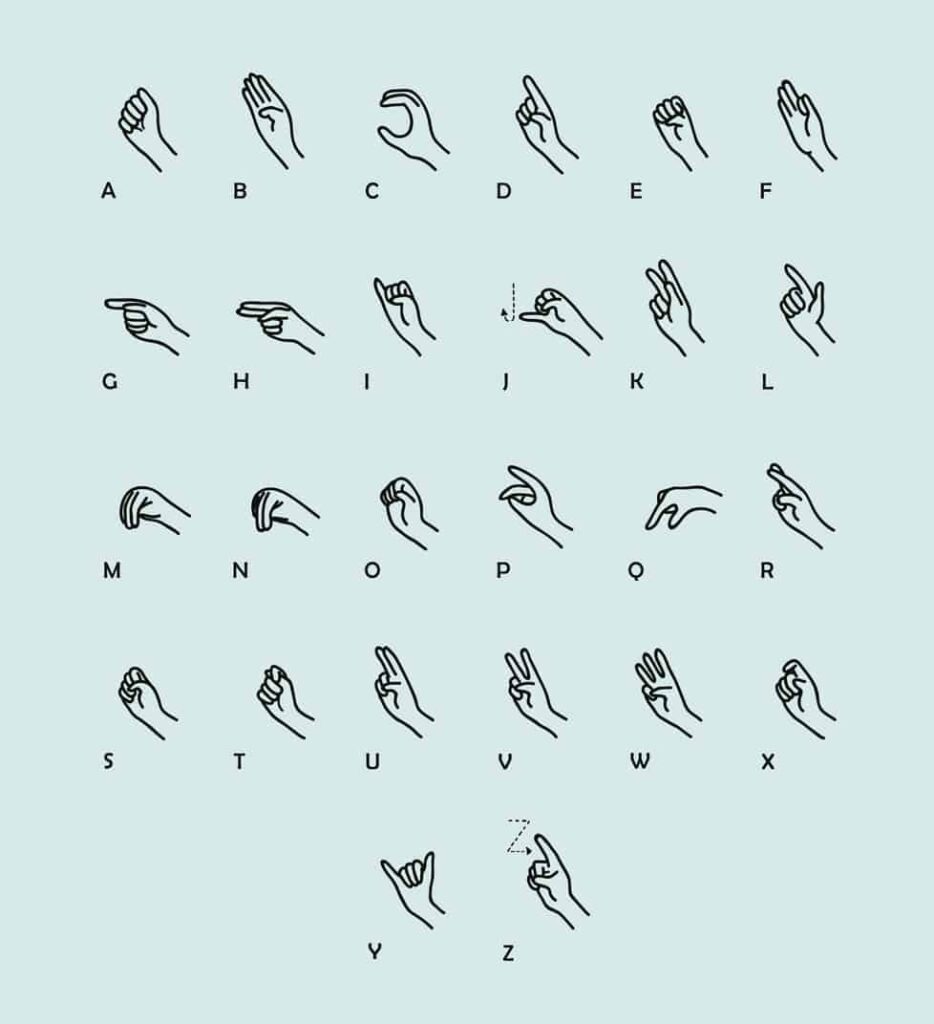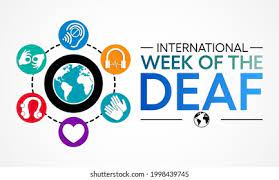Why Learn American Sign Language?
I’m driving my car along Ventura Blvd when I inadvertently cut off another driver. I realize my faux pax and sign, SORRY in sign language. Of course, the affronted driver didn’t know I was apologizing and gave me the middle finger salute. So boring. If she knew just a few signs she would have accepted my apology with a thank you in sign language. It is so important for drivers to communicate with other drivers about knowing what they are doing. Eye contact and knowing a few basic signs can be a huge help.
Besides shoring up a basic safety issue on the roads, learning ASL is a great workout for the brain. Students of American Sign Language learn a new culture and develop an understanding and appreciation of deaf people. In this time of political upheaval and nations at war, honing one’s empathy skills is a worthwhile endeavor. Also, ASL can be used where spoken languages are useless like underwater, at a great distance, at a loud concert, and even in libraries and museums where silence is preferred. But there’s more reasons to learn ASL. According to Gallaudet University, the only university in the world founded for the education of the deaf and hard-of-hearing, ASL is the sixth most common language used in the United States.
As a teacher I can’t over emphasize the need to teach ASL to children. When I was teaching sixth grade with an extreme hearing loss, I taught my students the manual alphabet. Once they knew it, I showed them the signs for spelling words they were studying. For example, I’d sign WEATHER in ASL and they needed to fingerspell the word back to me. They practiced this in groups of two during class time study sessions. At the end of the week, I’d give them a spelling test, and scores soared. Wikipedia has a wonderful article about the American Manual Alphabet at this link: https://en.wikipedia.org/wiki/American_manual_alphabet.

My daughters and their friends are of childbearing age. Many of them teach their infants ASL giving their children the opportunity to communicate before speech is possible. Babies who are taught baby sign language can let their caregivers know when they are hungry, thirsty, or in pain. And they can sign MORE in sign language when they want more food or water. Research is showing that baby signers show increased levels of confidence in childhood and beyond. { See https://scholarworks.utep.edu/cgi/viewcontent.cgi?article=2347&context=open_etd for more about the effects of baby sign on child development.]
Giving a deaf child a language sets them up for success in reaching developmental milestones. So why teach hearing children American Sign Language? During my time in the classroom as a deaf teacher, teaching my students sign language was my way of coping with deafness and improving communication with my students. Marilyn Daniels from Pennsylvania University also sees the benefits of teaching ASL to hearing students. In her book, Dancing With Words: Signing for Hearing Children’s Literacy, She compared students who studied ASL and those that didn’t. ASL learners had higher reading scores and a 15-20% improvement in their vocabularies over non-ASL students. Here’s the reason: Many ASL signs are iconic, since the signs look like what the words are, it helps the child recognize, pronounce, and know the meaning for their vocabulary words, For example, the iconic sign AGAIN in sign language—the right open hand, palm facing self, touches the open palm of the left hand…again.
There are long term effects on babies who learn ASL. Dr. Linda P Acredolo from University of California, Davis and Dr. Susan W. Goodwyn from California State University at Stanislaus have researched extensively babies learning ASL. Over a twenty-year longitudinal study, they discovered that exposure to ASL by young children leads to heightened reasoning skills and raises a child’s IQ by an average of 12 points. Also, signing babies begin to speak three months sooner than their non-ASL peers; and their sentences are longer and more complex. This sets them up for faster cognitive development and academic success in kindergarten and beyond. You can learn more from their book, Baby Signs: How to Talk with your Baby Before Your Baby Can Talk.
Where can you learn handspeak? American Sign Language is taught at most community colleges throughout the United States and Canada. You can also learn it on the Internet. On YouTube there are many different instructors teaching basic signs like THANK YOU in ASL. My favorite is Learn How to Sign taught by Meredith Rathbones. She and her husband, Brian, recorded well over 100 videos where Meredith teachers ASL for beginners, a good start for anyone wanting to learn easy signs and words in ASL.
Why learn American Sign Language? It increases your cognitive development that could fend off Alzheimer’s Disease, but more importantly, it gives infants and young children heightened reasoning skills and a higher IQ. Don’t’ forget about the importance of ASL on the open road. Back in my car on Ventura Blvd, a car nearly crashes into my red Mini. Furious, I don’t shoot him the bird. No, that’s too boring for this signer. I connect my right index finger to my thumb and throw it to my forehead. ASSHOLE!
Michael Thal is the author of The Lip Reader. Reader Review’s 5 star review says, “A beautifully touching story of a tenacious woman!”







One Comment